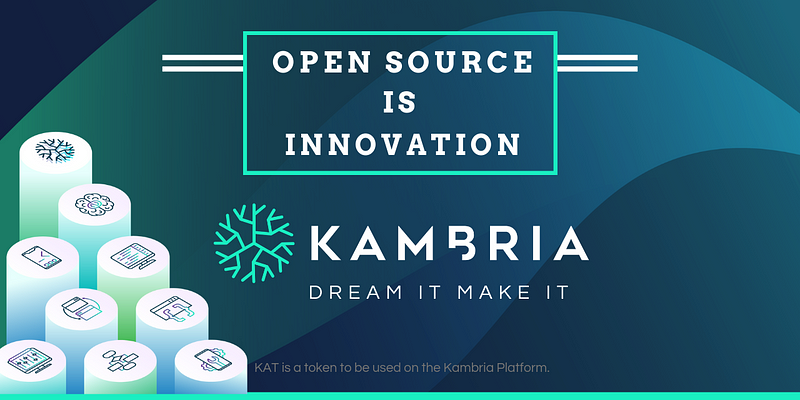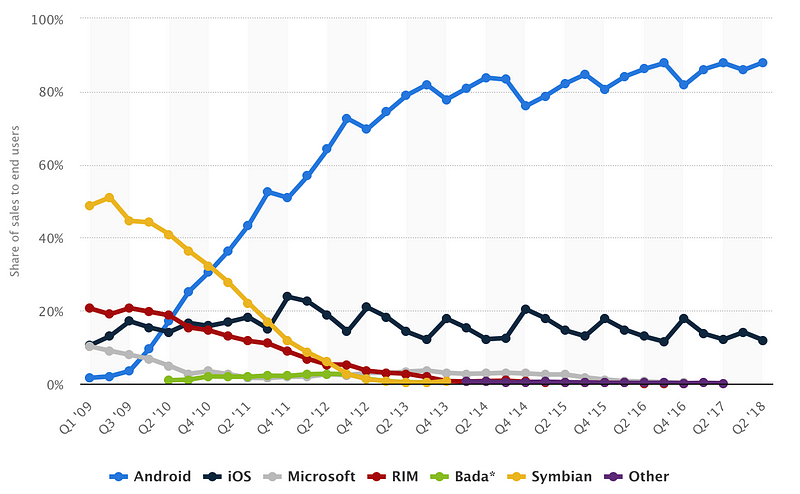
Like many cryptocurrency enthusiasts, I am a strong supporter of open source projects and decentralized systems. I quickly became enamored with the idea of distributed systems, fair voting, and true transparency. But, why does it matter? Long-standing is the debate between open source and closed-source, decentralized and centralized. Over the last several decades, we have learned a great deal from the triumphs (or lack thereof) in innovation, and I think it’s time we took a hard look at what it really means to be open source.
The birth of the smartphone
After ditching the idea to develop a new PDA (yeah, those were a thing for a while), the late Steve Jobs, founder of Apple (rest his soul ❤), set to work on his new vision, a world where he believed that cell phones would play a huge part in our daily lives. He pursued this idea, piggybacking off the highly successful iPod, and then in January 2007, Steve Jobs realized his dream: he changed the world. Announcing the iPhone at Macworld, his vision became a reality, and Apple immediately began its rise to become the biggest technology company in the world (topping over 1 trillion dollars), but they would not continue on without a challenge.

Google had also been working on its own iteration of the smartphone. In 2005, Google quietly acquired Android, an unknown software company building prototype operating systems for mobile phones. Shortly after Apple announce the iPhone, Google and HTC announced the first production release of their shiny new competitor: the HTC Dream. Built on top of a modified Linux kernel (UNIX), Android boasted limitless ability for open-source developers to contribute to the mobile OS, building on, and adding to a fully customizable platform built on open source technology.

The birth of the smartphone sparked an arms race of technological firepower that is still ongoing today, and likely will be for a long time. There is a lot to glean from this competition, and the debate continues: which OS is better? Is it iOS, the closed-sourced, proprietary giant? Or, is it Android, the open-sourced operating system that powers nearly 2.3 billion devices across the world?
I am here to make a case for the latter. Open source is innovation, and without it, many breakthroughs are stifled. To better define these terms, closed source software is proprietary, private source code that the developers do not share with the general public. Inversely, open source reveals the source code so that developers can tinker, modify, and build on it with ease.
Closed source does have its benefits. In general, iOS closed source software is targeted far less by malicious actors for two reasons: a) it is more difficult to find vulnerabilities when the source code is not public, and b) which is likely the biggest reason, there are about 500% more Android devices on the market than iOS. Your software is only as safe as the developer makes it, and while the iPhone does boast great security, it is just as important to be prudent when downloading unknown software on your iPhone and Mac than it is any other device. Very recently, we saw a case of closed-source software where a user reportedly lost a significant amount of cryptocurrency. The popular wallet, Coinomi, reportedly sent the users’ secret passphrase in plain text to Google’s API for spell-check. Had this software been open source, it would have been far easier to spot this security flaw, as most competent developers will do their due diligence before sending their hard-earned money into a new wallet.

Why are you hollering about phones? This is crypto.
Because! Innovation. We are talking about the next wave in technological breakthroughs. Whether it be in phones, robotics, AI, blockchain, or any other advanced technology, people are building and developing products right now. As we speak, some developer is out there is attempting to change the world that we live in, and it’s demonstrably true that when you have an open-source platform, and a proper set of tools, people are able build more. They will build faster, and arguably more creatively. Not only are they building more, but as time moves forward, open source platforms are increasing their market share, thus increasing the number of developers who build on them. Look at the two charts, and you tell me, what do you think open source software is doing to the smartphone industry? It’s taking over.

Let’s look at Linux
Linux, the popular open-source operating system, is also beginning to increase their market share of devices, with an increasing number of new desktops delivering with the OS from the manufacturer. With almost 26 million lines of code, from over 19,000 authors, the Linux Kernel is a great example of community collaboration focused on true innovation.Somewhat of a social experiment, Linux has proven itself highly successful, and free! For many developers, this is their “go-to” platform, and despite the source code being open, is also widely considered to be the most secure operating system in use today.
“Linux and Unix-based operating systems have less exploitable security flaws known to the information security world. Linux code is reviewed by the tech community, which lends itself to security: By having that much oversight, there are fewer vulnerabilities, bugs and threats.” -Troy Wilkinson, CEO Axiom Cyber Solutions
A case for open-souce
People have a history of taking a good idea, and making it better. Society itself is open source. The world we live in is the result of continuously building upon, and improving, the work of those who came before us. It is often said “the smartest people in the world do not work for your company,” and it begs the question: how can you tap into this global pool of innovators? The answer is open-source. Open-source has the ability to maximize talent. Because most closed-sourced platforms are built from scratch, it often discourages innovators who do not have the time, resources, capital, or even the expertise to completely redevelop an entire new product. By allowing others to work with your source code, they can plausibly focus on what they excel at: their niche talents, which often includes improving the very platform itself. It is also governed in a more democratic way, as commits to the source code must be peer-reviewed before accepting any changes, whereas closed-source platforms generally take a more authoritarian approach. People working together can achieve more. Not only can users easily collaborate in open-source systems, but they can utilize the work that has been completed before them. When utilized properly, open-source platforms allow innovators to focus, instead, on building the last ten percent of an innovative idea. Rather than reinventing the wheel, they are adding to (and reinventing) the way it’s utilized. How can you improve upon what is hidden? How many killer apps have come out of closed-source systems? And most importantly, can you completely trust the central power that governs your software?
Collaboration is key
I believe the future of advanced technology will be dominated by decentralized, open-source systems. A future for the people, by the people.We have a moral and civic responsibility to each other to collaborate to solve common challenges that benefit humanity as a whole. World-changing technologies, such as AI, are far too important to leave in the hands of just a few companies. It is potentially dangerous, and certainly susceptible to corruption. Open-source evens the playing field. We can build better together, and we minimize the risks for abuse. Very few share ideas. But what happens when you promote true open-source collaboration? Well, just look at Bitcoin. Cross-border payments, governance, online payments, censorship, true monetary ownership, and sovereignty will never be the same.
Now is the time to apply the same strategies to all of today’s most important innovations. Robotics, AI, machine learning, and data science are radically reshaping tomorrow, and with open-source platforms, you have the ability to participate and impact what that future looks like. Yes, you, and that is why we’ve created the Kambria Open Innovation Platform. While building a successful robotics company, OhmniLabs, we learned that essentially all other start-ups encounter the same bottlenecks, and we realized that we’re all wasting time. Almost all research and development are done in silos. Why is every company recreating nearly the same work, when we can open source, share, utilize, and then deploy these foundations? Just imagine what we can build if we no longer have to spend months, or often years, developing what someone else has already perfected.
So, this is an open call to all innovators. It is time to roll up our sleeves. Let’s build together, and that’s why we have created developer centered initiatives such as our Global Grand Challenge, where we will be awarding $50,000 to the best team(s). If you are interesting in building on an open source initiative, earning incredible rewards, and increasing your exposure and reputation, sign your team up today for the first ever Global Grand Challenge, where you can compete with other teams from across the globe to build the best AI personal assistant! To sign up your team, please visit: https://bounty.kambria.io/team. Come and #BUIDL on Kambria. ✌️
William Ryan — Kambria Community Manager
— — —
Kambria
Telegram (ENG) Telegram (KOR) Telegram (VIE)
Email: info@kambria.io
KAT is sold to be used on the Kambria platform.








